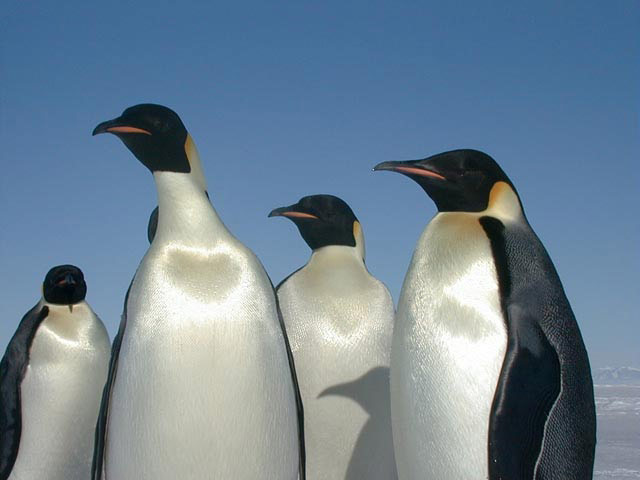All Penguins Are Cute, But Some Are More Cute Than Others

It could be their immaculate fashion sense or maybe it's that sweet, wobbly gait, but there's no denying penguins are, well, adorable. Like the rest of their cuddly class--the pandas, koalas, seals and bunnies--they help sell greeting cards and animated movies by tugging at our heartstrings.
But research shows our fondness for particular animals could have detrimental effects on preservation efforts. These so-called "glamour animals" dominate fundraising campaigns and news headlines, siphoning money away from more needy--if less photogenic--creatures, according to some experts.
Now scientists say that even within the cutest populations, we still play favorites.
David Stokes, a conservation biologist at the University of Washington, sorted penguin species by looks into what he called "morpho-species" and found that certain groups were overrepresented in popular photography books, a.k.a. coffee-table books. With greater "photograph area," these penguins showed up more frequently and in larger pictures--the Paris Hiltons of the avian set.
"The really striking thing was that even though the species we looked at were really similar, there was a consistent difference in how much we saw each one," Stokes told LiveScience.
A question of color
The research, which is published in the online edition of the journal Human Ecology, took into account logistical issues such as population size and accessibility of each group's habitat to humans.
Sign up for the Live Science daily newsletter now
Get the world’s most fascinating discoveries delivered straight to your inbox.
Once they determined that the most popular was the Emperor Penguin--the same birds that movie-goers saw slide across the icy grades of Antarctica in "March of the Penguins"--Stokes and his colleagues wondered what might make the flightless birds so attractive to us.
Of all the variables, including size and neoteny (the retention of babyish traits), warm colors were the only significant determinant of how often the birds appeared in the coffee-table books. Penguins with dabs of yellow or red on their otherwise two-tone bodies were the most prevalent.
Stokes worries the findings could mean that birds most in need of protection won't get it. And in fact, a type of endangered penguin that does not have colorful markings received very little coverage in the books.
"Our preferences are not necessarily going to be sufficient guides to what we want to protect," Stokes said.
Short end of the stick
Past research has shown that lack of human interest in an animal group can result in decreased funding for its protection.
In a 1998 issue of Conservation Biology, Czech et al. found that "advantaged subjects," including birds, mammals and fish, were under the protection of significantly more nongovernmental organizations. The allocation of benefits from the U.S. Endangered Species Act were similarly skewed.
So the next time a rotund panda or brightly colored parakeet catches our eye, Stokes hopes we consider other animals that lack such sweet-looking faces — or, as with snails, moths or worms, that have no faces at all — but still need our protection.










